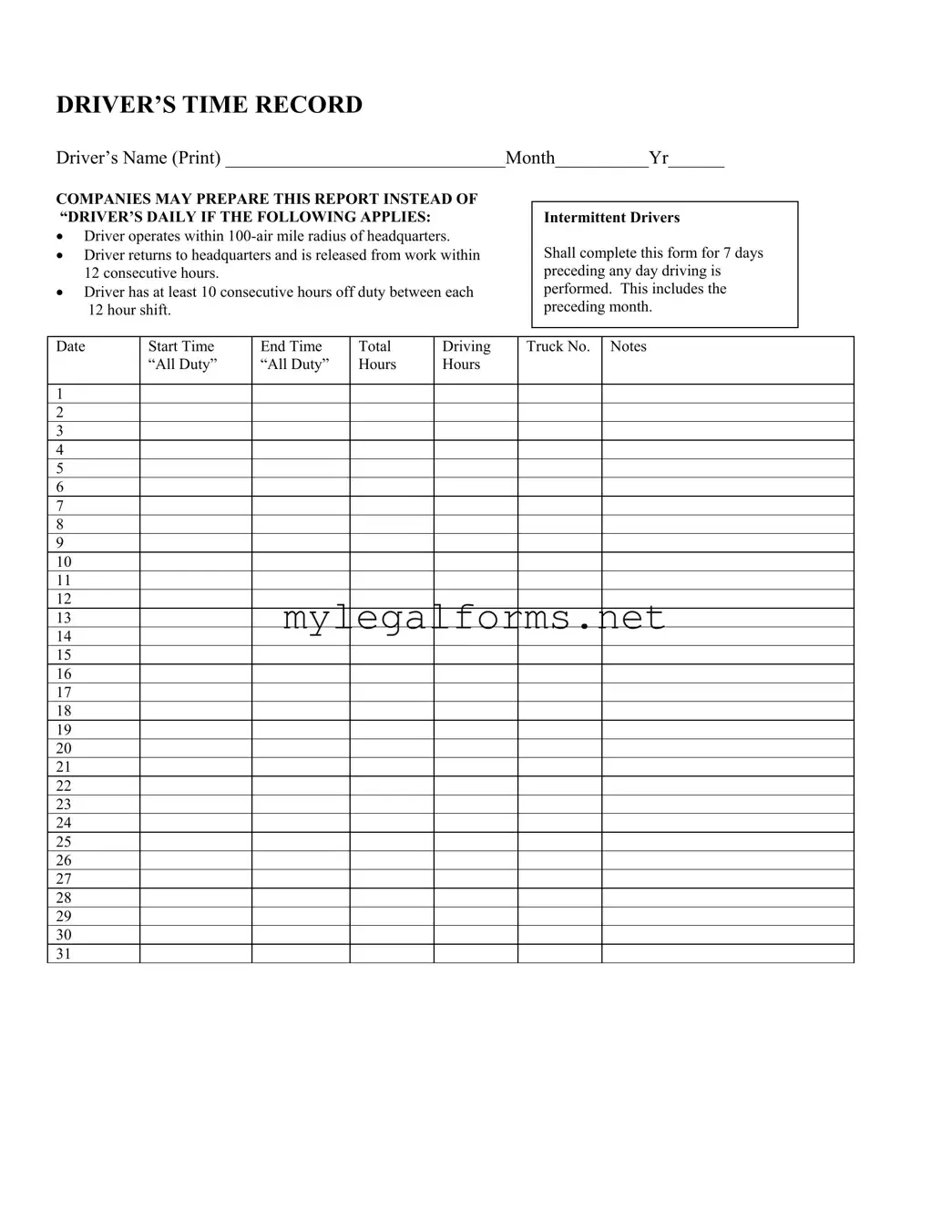Filling out the Driver Time Record form accurately is crucial for compliance and safety. However, many individuals make common mistakes that can lead to significant issues. One frequent error is failing to provide the driver's name clearly. This may seem minor, but without a proper name, it becomes difficult to track records and ensure accountability.
Another mistake occurs when the month and year fields are left blank or filled out incorrectly. This information is essential for organizing records and ensuring they align with the correct reporting period. If these fields are not completed accurately, it can lead to confusion and potential compliance issues.
Many drivers overlook the requirement to indicate whether they meet the criteria for using this form instead of the “Driver’s Daily.” They may not check the boxes confirming that they operate within a 100-air mile radius, return to headquarters within 12 consecutive hours, and have at least 10 consecutive hours off duty. Missing these checks can result in the wrong form being used, which can have legal implications.
When it comes to recording driving hours, some individuals make the mistake of not accurately logging start and end times. This can lead to discrepancies in total driving hours, which is crucial for compliance with regulations. It is important to ensure that these times are recorded in a clear and consistent manner.
In addition, failing to total the driving hours correctly is a common oversight. The total driving hours must reflect the difference between the start and end times for each day. An incorrect total can lead to misunderstandings about driving limits and potential violations of regulations.
Another mistake is neglecting to fill out the truck number. This piece of information is vital for tracking which vehicle was used during the recorded hours. Without it, accountability can be compromised, especially if there are questions about vehicle maintenance or incidents that occur during a trip.
Some drivers also forget to include notes that might clarify any unusual circumstances or details about their driving. These notes can provide context that is helpful for both the driver and any regulatory bodies reviewing the record. Omitting this information can lead to misunderstandings about specific trips.
Inconsistent reporting can also be an issue. If a driver does not use the form consistently over time, it can create gaps in records. This inconsistency can raise red flags during audits and inspections, leading to potential penalties.
Many drivers fail to review their completed forms before submission. A simple review can catch errors or omissions that might have been overlooked. Taking the time to double-check the information can save a lot of trouble down the line.
Lastly, not keeping a copy of the completed Driver Time Record form is a mistake that can have serious repercussions. Retaining a copy ensures that drivers have a record of their hours in case of disputes or audits. It is always better to have documentation readily available to support compliance.


